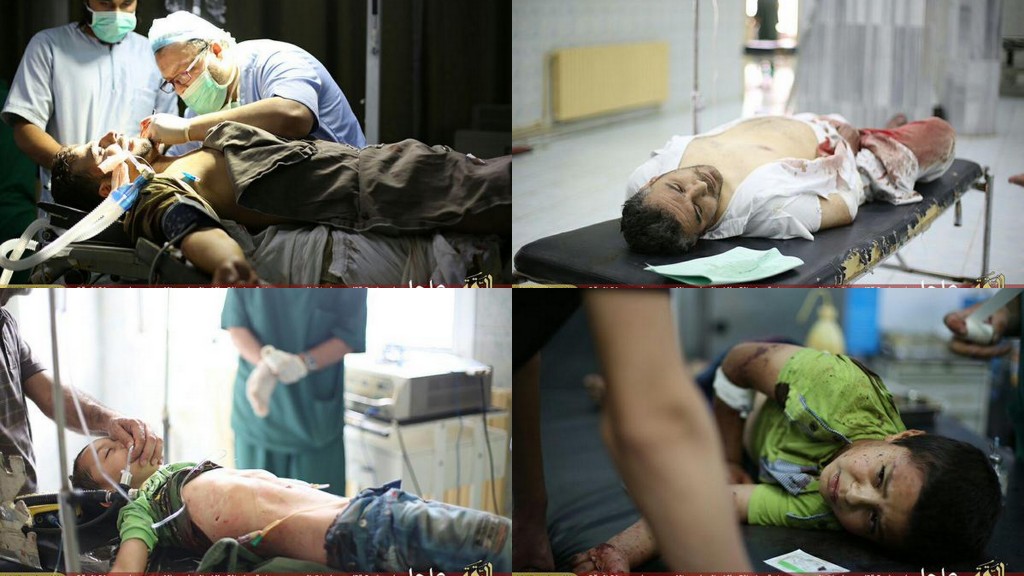
The United States has conceded five fresh civilian casualty incidents in Iraq and Syria which between them killed eight or more non-combatants, it believes.
Analysis suggests the actual toll from these five events is between 14 and 21 civilians killed, raising fresh questions about US and Coalition dependence upon aerial-only footage during post-strike investigations.
Airwars presently estimates that a further 803 to 1,127 civilians are likely to have died in an additional 132 problematic Coalition strikes since August 2014.
Five incidents
In a press release issued January 15th 2016, CENTCOM notes that “After a thorough review of the facts and circumstances for each allegation, the preponderance of evidence indicates five separate U.S. airstrikes in Iraq and Syria, between April 12 and July 4, have likely resulted in the death of eight civilians and injuries to an additional three civilians.”
The US military command – which spearheads the international campaign against Islamic State in Iraq and Syria, also adds: “We deeply regret the unintentional loss of life and injuries resulting from those airstrikes and express our deepest sympathies to the victims’ families and those affected.”
Two previous civilian casualty incidents – and one ‘friendly fire’ event – have also been conceded by the United States. The other twelve partners in the alliance claim to have killed no civilians between them – despite more than 2,000 non-US airstrikes against Daesh to January 11th 2016.
For a full assessment of each incident – including all known sources, victim names and supportive photographs and videos – see our 2015 civilian casualty pages
The five new incidents admitted by CENTCOM took place over a three month period beginning April 2015.
Three cases were the result solely of internal reporting by US aircrews and analysts – with no known public records of civilian casualties at the locations for those dates.
Following a strike by an A-10 Warthog at Hawijah in Iraq on April 12th “it was assessed that two unidentified civilians were killed” CENTCOM reports.
On June 19th a civilian was also injured when they strayed into the ‘kill box’ during an attack on ISIL vehicles near Tall al Adwaniyah in Hassakah province, Syria.
And on June 29th 2015, two or more civilians were killed or injured during a US strike on an ISIL tactical unit and two ISIL vehicles. As the attack commenced, two civilian vehicles also approached. As CENTCOM now notes, “there was insufficient evidence to determine the level of injuries to the civilians operating the passing car and motorcycle.”
Underestimating casualties
Two other events conceded by CENTCOM were previously known to field researchers and journalists. And here it seems, the US is underestimating the number of killed and injured.
On June 11th 2015 at Slouk near Raqqa in Syria, US aircraft targeted an ISIL tactical unit. CENTCOM now says its assessment is that “three unidentified civilians were killed.”
Yet local casualty recorders Raqaa Is being Slaughtered Silently had reported almost immediately after the attack that civilian Yusuf Al Sayid had died, along with his two wives and their five children.
And on July 4th last, a US targeted strike in central Raqaa killed at least seven named civilians – among them three children – rather than the “three unidentified civilians” CENTCOM says were likely killed. Among the non-combatants known to have died that day are Mohammed Khalil Al Raheel (aged 50), Fouad Hamoud Al Nimr (aged 10), Ouday Ammar Al Shawakh (pictured right) and Raed Na’ila (11 years old.)
Despite such discrepancies, the decision by CENTCOM to release fresh details of civilian fatalities is likely to be welcomed by regional casualty recorders and NGOs.
Before now, the Coalition had yet to confirm a single civilian fatality – despite 35,000 bombs and missiles having been dropped on Iraq and Syria to December 31st. Instead, six ‘likely’ civilian deaths had been admitted to – a fraction of the many hundreds of civilians which all casualty recorders agree the Coalition is likely to have killed to date.
David Cameron: ‘We must look at allegations’
In related news, British Prime Minister David Cameron has stepped into an increasingly fraught row regarding alleged civilian casualties from RAF airstrikes.
Airwars researchers identified eight claimed incidents in December 2015 in the Iraqi cities of Mosul and Ramadi, in which a total of 72 to 83 civilian deaths were alleged.
Some of these December incidents are poorly reported, while others are contested. Even so, Airwars believes four of the events – each based on claims by two or more credible sources – warrant urgent investigation. The RAF has confirmed it carried out airstrikes in both cities on the dates in question, alongside other Coalition nations.
Yet the Ministry of Defence (MoD) revealed on January 7th that when it came to assessing whether UK airstrikes in Iraq and Syria might have caused civilian casualties, it would not consider credible reports by outside agencies such as casualty monitors, international news media or NGOs.
Instead, the MoD said it was relying solely on “our own aerial assessments following each strike as well as on the ground evaluations from partners.” The disclosure appeared to contradict earlier assurances by a defence minister that the MoD “would consider all information relating to civilian casualties received.”
Challenged on the issue by the Scottish Nationalists this week, Prime Minister David Cameron appeared to indicate a policy shift: “We take a very careful approach to minimise and eradicate civilian casualties wherever we can. But obviously if people make allegations we must look at them,” he told senior MPs.